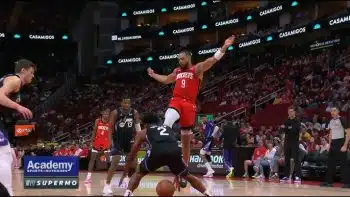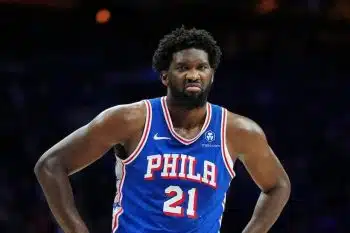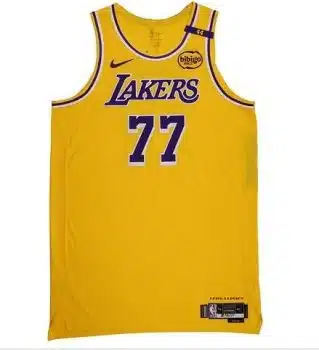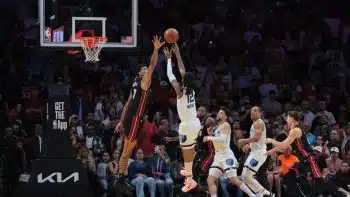NBA
NBA Daily: Has The Three-Point Shot Been A Key To Success?
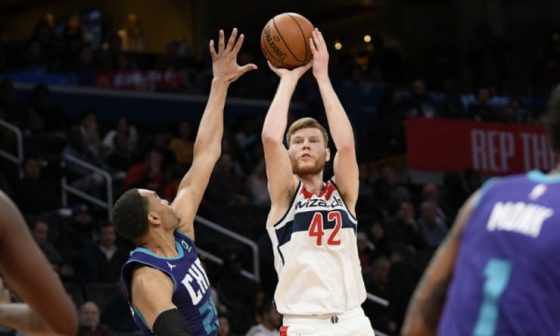
Needless to say, the style of play in the NBA has changed dramatically over the last 10 or so years. Long gone are the days of post-ups and dominant big men in the paint. Of course, that’s not to say Shaquille O’Neal wouldn’t thrive in today’s league, but his role would likely be quite different than it was in the early 2000s.
The same thing goes for players like Dwight Howard and Yao Ming. Centers still have a very prominent place in today’s NBA, it’s just that post-ups are much less effective than lobs or pick-and-rolls.
Today’s NBA is purely driven by the three-point shot. As of today, the average three-point attempts per team per game this season is 33.6 — that is the highest number ever. In fact, the attempts per game have grown every year since 2000, other than a bit of plateauing toward the end of that first decade.
So why are teams taking more three-point shots?
For starters, the obvious reason would be that it is worth one more point than the standard two-point basket. Sure, a layup or dunk is much easier to make than a three-pointer, but when you’re talking 18 feet or deeper in the midrange, those shots don’t get much easier than a three. As far as pure efficiency goes, it’s very easy to argue that the only basket more efficient than a three would be an almost-automatic two, a la layup or dunk.
And teams are starting to realize this.
It quietly started with the LeBron James-led Miami HEAT. They spaced the floor and didn’t employ a traditional big in the sense of the word. The pre-Kevin Durant Golden State Warriors featuring Stephen Curry and Klay Thompson perfected the art of the three, leading them to a championship subsequently followed by the best record in the history of the NBA – only to lose to the LeBron led Cleveland Cavaliers who, you guessed it, shot a bunch of threes.
Like mentioned, this year now more than ever the three-point shot is staking its claim. So let’s dive a bit into the numbers and see if the three-point shot is all it’s hyped up to be.
Let’s first look at effective field goal percentage: By definition, it measures field goal percentage adjusting for made three-point field goals being 1.5x more valuable than made two-point field goals.
We’ll list out the top-10 followed by their current position in their conference.
1.) Milwaukee Bucks (1st in East)
2.) Dallas Mavericks (6th in West)
3.) Los Angeles Lakers (1st in West)
4.) Miami HEAT (3rd in East)
5.) Houston Rockets (3rd in West)
6.) Utah Jazz (5th in West)
7.) Detroit Pistons (11th in East)
8.) Philadelphia 76ers (5th in East)
9.) Memphis Grizzlies (9th in West)
10.) San Antonio Spurs (8th in West)
As you can see, eight out of the top 10 are playoff teams. Both top seeds in either conference are cemented in the top three — the only outlier as far as struggling teams go seems to be the Detroit Pistons. (Of note: The Memphis Grizzlies aren’t necessarily struggling, they know their personnel and are playing at an admirable level considering this.)
To be fair, effective field goal percentage doesn’t (and shouldn’t) paint the entire picture of how teams are playing. But to say it isn’t a large factor of success would be wrong. For example, take the bottom five teams in effective field goal percentage:
26.) Minnesota Timberwolves (11th in West)
27.) Chicago Bulls (10th in East)
28.) New York Knicks (14th in East)
29.) Orlando Magic (7th in East)
30.) Golden State Warriors (15th in West)
Point made.
Now, we move to the teams that are generating the most open threes. Statistically speaking, teams shoot higher percentages from beyond-the-arc when they have more open looks — this goes without saying.
Unsurprisingly, the team generating the most wide-open threes — or, when a defender is further than six feet away — is the Milwaukee Bucks. Something interesting, however, is that the top-10 isn’t rounded out by solely playoff teams. It’s actually a healthy mix of current winners and losers. This goes to show that although creating open looks for your team is important — naturally, it really just comes down to making them.
Finally, there’s the topic of top teams in the league when it comes to three-point field goals. The Rockets are on top in both makes and attempts. They are followed by the Dallas Mavericks. The rest of the list, surprisingly, is an even split of playoff and non-playoff teams.
So just how important is the three-point shot? On one hand, you can see the value it has as it’s worth more points than any other field goal and isn’t much harder to hit than a deep-two. On the other, plenty of bad teams seem to be taking and making threes, too, in some cases as good as or better than the top-seeds. So what gives?
If it wasn’t already clear — as the upswing in analytics and strategic roster-building — the three-point shot is incredibly important. The league has evolved this way and it’s not changing anytime soon. So, then, why is it hard to separate the cream from the crop when viewing three-point efficiency? It’s not an overly-complicated answer, but that’s because there are plenty of other important factors when it comes to playing basketball.
Sure, the Bucks are killing it from three. Do you know where else they rank number one in the NBA? Defense. The Utah Jazz lead the NBA in three-point percentage but they are just fifth in the Western Conference. The three-ball has changed the game, likely for good, but there are still plenty of key factors that make up a championship-worthy team, obviously.
It’s revolutionized the way the Rockets play basketball, for example. But, at the end of the day, don’t lose sight of the entire recipe necessary to bring home an NBA championship. Taking and converting three-pointers might get you to the postseason, but that won’t bring a parade down main street without other major strengths either.


